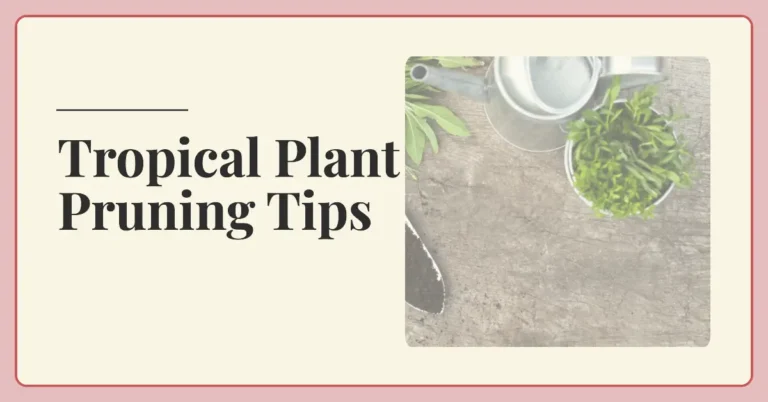Watering Bromeliads
Understanding the Basics of Bromeliad Care

Bromeliads are a tropical delight with their vibrant colors and unique shapes. They’re relatively easy to care for, even if you don’t have a green thumb. You first need to know that bromeliads love bright, indirect light. So find a spot in your home where they can bask in the glow but not get scorched by direct sunlight.
Next up on our list of bromeliad basics is water – these plants aren’t big drinkers! Their central “tank,” formed by the rosette of leaves, collects rainwater in nature. At home, it’s best to mimic this natural watering method by filling the tank with water rather than watering the soil directly. Be sure not to overdo it though; too much water can lead to root rot.
Lastly, let’s talk about temperature and humidity – two factors that often go overlooked when caring for indoor plants. Bromeliads prefer temperatures between 55-80°F (13-27°C) and thrive in humid environments like bathrooms or kitchens. If your home doesn’t naturally provide these conditions, consider using a space heater or humidifier respectively.
Key Takeaways:
- Understanding the natural habitat of bromeliads to tailor your watering routine
- The importance of water quality in bromeliad care
- Identifying signs of overwatering and underwatering
- Utilizing the right tools for watering bromeliads
How Often Should You Hydrate Your Bromeliads?
The frequency of hydrating your bromeliads largely depends on the type and size of the plant, as well as environmental factors such as temperature and humidity. Generally speaking, most bromeliads prefer to be watered once a week in the summer months when it’s warmer and less frequently during winter when temperatures drop. The goal is to keep their soil moist but not soggy. Over-watering can lead to root rot which we definitely want to avoid.
Here’s something interesting: Bromeliads have a unique adaptation called tank habit, where they store water in their central rosette or “tank”. This means that while you should keep an eye on their soil moisture levels, don’t forget about filling up this tank too! But remember, stagnant water can become a breeding ground for pests, so flush this out every few weeks with fresh water.
While watering schedules are important, let’s not overlook the kind of water we use. Tap water often contains chlorine which might not sit well with these tropical beauties. Rainwater is ideal because it’s naturally soft and free from chemicals found in tap or bottled waters – if you’re able to collect some for your plants, they’ll thank you! If rainwater isn’t available, though, letting tap water sit overnight before using allows time for chlorine evaporation,q making it safer for your bromeliad friends.
The Right Way to Hydrate Your Bromeliads
Hydrating your bromeliads properly is essential to their health and survival. The first step in doing so is understanding the specific water needs of your plant, as different types of bromeliads require varying amounts of moisture. Most bromeliads are epiphytic, meaning they grow on other plants for support but do not take nutrients from them. These types prefer their roots to be on the drier side and thrive when their central cup, or ‘tank’, is filled with water.
Let’s delve into the process a bit more. To hydrate these tropical beauties correctly, pour water directly into the tank of the plant until it’s full. It’s important to use rainwater or distilled water if possible because tap water often contains minerals that can build up and harm your bromeliad over time. If tap water is unavoidable, let it sit out overnight before using it to allow some chemicals like chlorine to evaporate.
Now, you might wonder how often should this hydration ritual occur. Well, during warmer months when evaporation rates are high, once a week would suffice, while in colder seasons, every two weeks should work just fine! Remember though – never let your bromeliad sit in standing water, as this can cause root rot and eventually kill the plant. And don’t forget about humidity! Bromeliads love humid environments, so consider placing a tray filled with pebbles and some water under your pot (but ensure that the pot doesn’t touch the liquid) This will create an ideal moist atmosphere around your precious green friend!
Importance of Rainwater for Bromeliads
Rainwater can be a game-changer for the health and growth of your bromeliads. You see, rainwater is naturally soft water free from salts, minerals, and chemicals often found in tap water. These elements can build up over time in your plant’s soil and cause harm to its root system. Rainwater also has a neutral pH level which is beneficial for bromeliads as they prefer slightly acidic to neutral soil conditions.
Another interesting thing about rainwater is that it contains small amounts of nitrogen – an essential nutrient for plants. Nitrogen aids leaf growth and gives the plant its vibrant green color by helping with photosynthesis. When you hydrate your bromeliads with rainwater, you’re not just quenching their thirst but nourishing them simultaneously! It’s like serving them a refreshing drink packed with vitamins!
But here’s something crucial to remember: while using collected rainwater is advantageous for your bromeliad care routine, make sure it’s clean before use. If collected improperly or stored without a proper cover, rainwater can become contaminated with pollutants or bacteria that could harm your plants’ health. So always ensure you’re providing safe and clean hydration sources for these tropical beauties!
Best Time of the Day to Hydrate Bromeliads
Understanding the best time to hydrate bromeliads is pivotal for their growth and overall health. Many bromeliad enthusiasts swear by early morning watering, much like nature’s dew or light rainfall would provide in a natural setting. This allows the plant to absorb moisture throughout the day when it’s actively photosynthesizing. Moreover, this timing helps minimize the chances of water sitting stagnant in the plant overnight, which could potentially lead to rot.
However, if you’re not an early riser or your schedule doesn’t permit morning watering, don’t fret! Bromeliads are quite forgiving and can adjust well as long as they’re not left dry for extended periods. An evening hydration session can also work just fine, provided that there is enough air circulation around your plants to allow excess water to evaporate before temperatures drop at night.
In essence, while mornings may be ideal from a botanical perspective due to mimicking natural conditions most closely, evenings too can serve equally well with appropriate care taken about adequate ventilation and temperature control. The key lies in understanding your specific variety of bromeliad needs along with balancing that against what works best within your daily routine.
The Role of Humidity in Bromeliad Health
Humidity plays a pivotal role in the health of bromeliads. These tropical plants thrive in humid conditions, much like their natural habitat in rainforests. So if you’re planning to make these vibrant beauties part of your indoor plant collection, it’s essential to replicate this environment as closely as possible. Sure, they can survive in less-than-ideal conditions, but humidity is key for them to truly flourish and display the stunning colors they are known for.
Now you might be wondering how exactly one increases humidity. Well, there are several ways! For starters, consider placing your bromeliad near other plants. Plants release moisture into the air, which increases the overall humidity around them – a process known as transpiration. This way, all your houseplants benefit from each other’s company! Another method involves using a tray filled with pebbles and water placed beneath your plant pot; just ensure that the bottom of the pot isn’t touching the water directly because we don’t want root rot now, do we?
While maintaining high humidity levels is crucial for bromeliads’ well-being, it’s equally important not to go overboard either. Too much moisture can lead to fungal diseases or cause leaf tips to turn brown and die off prematurely – definitely not what we’re aiming for here! The trick lies in striking that perfect balance where your bromeliad feels right at home without being overwhelmed by excessive dampness.
Mistakes to Avoid When Hydrating Bromeliads
One common mistake that bromeliad enthusiasts often commit is over-hydrating their plants. While it’s true that these tropical beauties love a good drink, there’s such a thing as too much water. Overwatering can lead to root rot and other fungal diseases that can harm your plant’s health. Remember, bromeliads are native to regions where rainfall is sporadic and well-adapted for periods of drought. So, instead of sticking to a strict watering schedule, try checking the soil moisture levels before deciding whether your bromeliad needs hydration.
Another error some folks make involves using tap water for hydrating their bromeliads. Don’t get me wrong – if tap water is all you have access to, it won’t necessarily harm your plant in most cases. However, remember that bromeliads prefer rainwater because it mimics their natural environment more closely and doesn’t contain chlorine or other chemicals found in tap water that could cause damage over time.
The third blunder we need to talk about revolves around improper misting practices. Many people think spraying the leaves with water will suffice since these plants absorb most of their nutrients through foliage rather than roots, as most other houseplants do. But here’s the catch: while yes, they do appreciate high humidity levels (remember they come from tropical climates), simply misting them isn’t enough! They also require proper watering at the base of their central reservoirs.

Avoiding Over-Hydration When Watering Bromeliads
Over-hydration is a prevalent issue encountered when watering bromeliads. While it might seem logical to assume that tropical plants require substantial amounts of water, bromeliads defy this notion due to their unique moisture and nutrient absorption system, which primarily involves their leaves rather than roots.
Excessive water can foster an environment conducive to harmful bacteria and fungi, leading to root rot and fungal diseases that compromise the bromeliad’s health. The roots may decay, losing their ability to absorb nutrients efficiently, and you might observe the leaves turning brown or yellow, signaling over-hydration.
Striking the Right Balance in Watering Bromeliads
The essence of watering bromeliads is maintaining a delicate balance; they adore humidity but despise being perpetually soaked. To achieve this balance:
- Understand the Bromeliad’s Absorption System: Bromeliads primarily absorb moisture and nutrients through their leaves, negating the need for frequent watering compared to other plants.
- Prevent Over-Hydration: Over-hydration can induce root rot or fungal diseases, turning the leaves brown or yellow and fostering a habitat for harmful pathogens.
- Maintain Humidity, Not Wetness: Bromeliads thrive in humid conditions and do not favor being constantly drenched.
- Allow Soil to Dry: Permit the bromeliad’s soil to dry between watering sessions, avoiding a persistently moist soil condition.
Remember, when watering bromeliads, it is preferable to slightly under-water than to over-water, safeguarding them from the adverse effects of over-hydration.
The Impact of Inadequate Watering on Bromeliads
Inadequate watering can lead to several issues in bromeliads, affecting both their appearance and growth. One of the first signs of dehydration is the browning and crisping of leaf tips, a result of cells shriveling up and dying due to insufficient water.
But the repercussions go beyond aesthetics. A dehydrated bromeliad experiences stunted growth as the plant redirects energy from growth to survival. Moreover, the vibrant blooms bromeliads are renowned for may fail to appear without adequate watering, with severe dehydration pushing the plant into a dormant state, halting growth entirely.
Therefore, understanding the nuances of watering bromeliads is crucial to showcasing their vibrant blooms and ensuring healthy growth.
Mastering the Art of Watering Bromeliads for Optimal Health
Watering bromeliads goes beyond merely pouring water into the pot; it is indeed an art that requires understanding their unique needs arising from their epiphytic nature. In their natural habitat, bromeliads grow on trees, utilizing their roots more for anchorage than water absorption.
To master the art of watering bromeliads, focus on filling the central cup or tank formed at the base of their leaves with water, avoiding the conventional root-level watering seen in other plants. Utilizing distilled or rainwater can prevent potential damage from the minerals found in tap water. Regularly empty the central cup every one to two weeks to prevent water stagnation and rot and fungal infection risks.
Furthermore, bromeliads thrive in high-humidity environments. You can replicate this condition by placing your plant on a tray with pebbles and water, ensuring the pot does not touch the water to avoid soggy conditions. This setup maintains a humid microclimate, providing your bromeliad with the ideal conditions it loves.
FAQs
What should I know about basic bromeliad care?
Bromeliads are tropical plants that require a specific set of conditions to thrive. This includes proper hydration, access to sunlight, and good air circulation.
How often should I water my bromeliads?
The frequency of watering varies depending on the type of bromeliad and the specific conditions in your home. However, a general rule is to water once a week.
What is the right way to water my bromeliads?
The best way to water bromeliads is to pour water directly into the cup at the base of the plant. This mimics their natural rainforest environment.
Is rainwater good for bromeliads?
Yes, bromeliads thrive on rainwater. It’s free of chemicals found in tap water and can be more beneficial for the plant’s overall health.
When is the best time to water bromeliads?
The best time to water bromeliads is early in the morning. This allows the water to evaporate throughout the day and prevents waterlogging.
Why is humidity important for bromeliads?
Bromeliads are native to humid environments. Therefore, maintaining a high level of humidity helps them grow and thrive.
What mistakes should I avoid when watering bromeliads?
Avoid overwatering bromeliads, as this can cause root rot. Also, remember to empty the central cup of the plant every so often to prevent water stagnation and bacteria growth.
What happens if my bromeliads get too much water?
Overwatering bromeliads can lead to root rot and other fungal diseases. It can also cause the leaves to become discolored.
How does dehydration affect bromeliads?
Dehydration can stunt growth in bromeliads and cause the leaves to become brown and crispy. If left untreated, it can eventually lead to the death of the plant.
How can I maintain proper hydration for my bromeliads?
Regularly check the moisture levels of your bromeliads and adjust watering accordingly. Remember that it’s better to underwater than overwater bromeliads. Also, consider using a humidifier to maintain a humid environment for your plants.
Bonus Section
The Best and Worst Water for Bromeliads
Author: Melanie Dearringer
Bromeliads have specific water preferences due to their tropical nature. The best type of water for these plants is rainwater, which is closest to what they would receive in their natural habitat. However, it is essential to avoid using a metal container to collect rainwater as it can introduce harmful metallic elements to the water.
Purified water is safe but lacks essential minerals that bromeliads need for optimal growth. If you opt for purified water, ensure to have a fertilizing plan to supplement the lost nutrients.
Tap water is generally not recommended due to the presence of chemicals such as chlorine, which can build up in the plant’s container and cause damage over time. If tap water is your only option, let it sit for 24 hours to allow the chlorine to dissipate before using it to water your bromeliads.
Softened water should be avoided as the sodium levels left behind from water softeners can be extremely harmful to your bromeliads.
It is also advised to use water at room temperature to prevent root rot that can occur when cold water chills the plant’s roots.
For more detailed insights, you can read the full article here.







